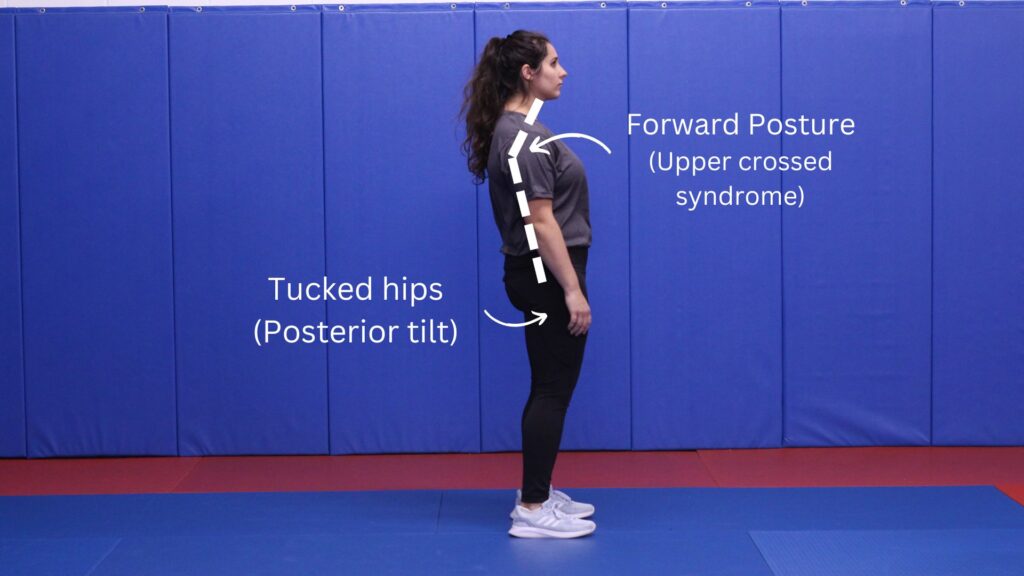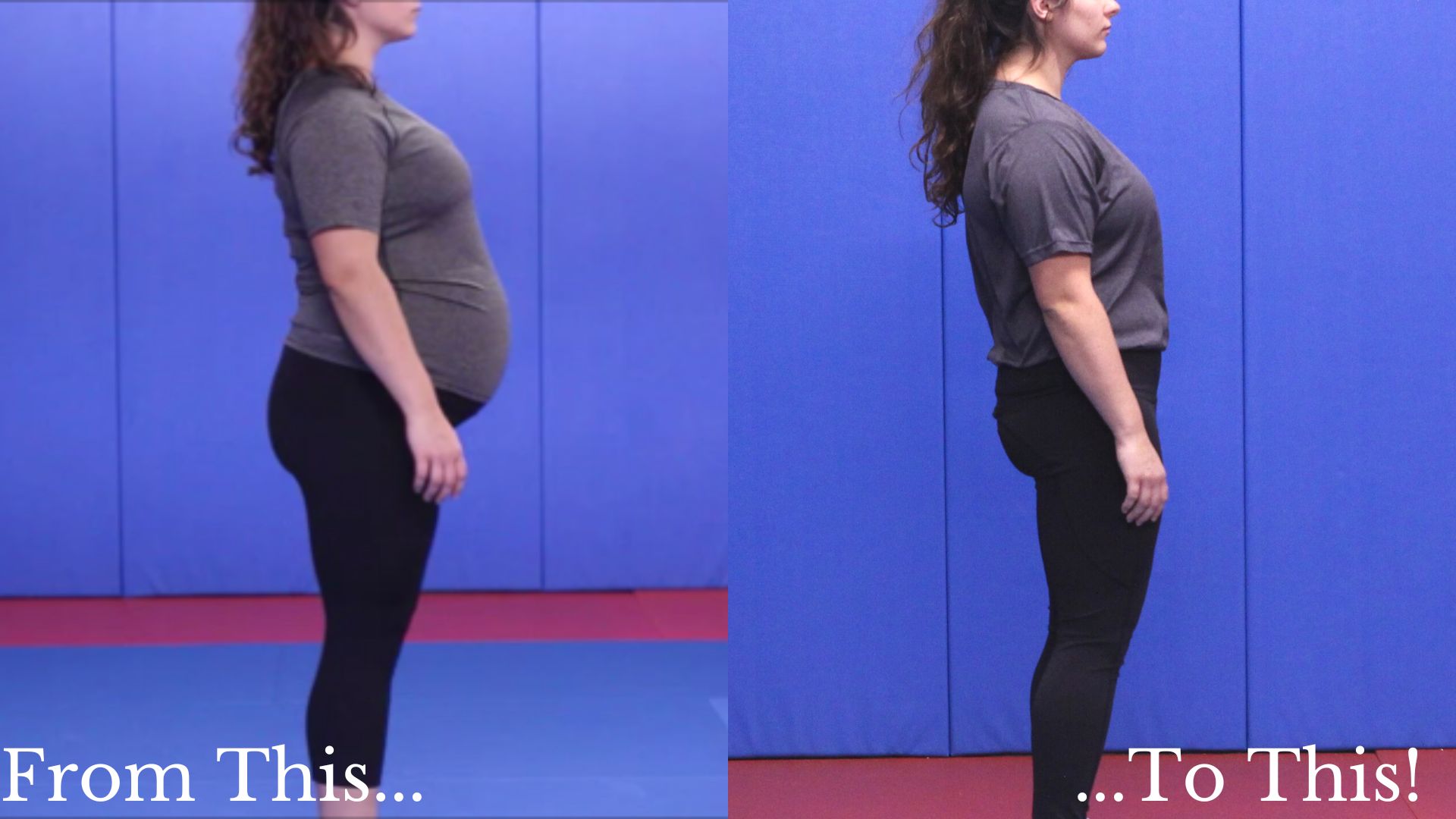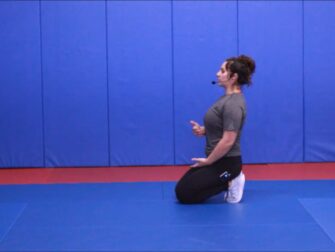Quit making these postpartum mistakes and replace them with good habits for improved posture after pregnancy.
Why is my posture so bad after pregnancy?
More times than I can count, I have heard, “Kids ruin your body.” Yikes. Don’t get me wrong, pregnancy and childbearing is definitely hard on the body. And pregnancy can definitely change your posture. (You can read all about that here.) But c’mon! Are our children really to blame for all of the aches, pains, and things we don’t like about our bodies after we have them? I have jumped on the bandwagon and said it myself after I had my daughter. I went from peak physical condition to feeling when it rains LOL. (Not quite but my body cracked A LOT in the mornings.) But if we are honest with ourselves, they are not the cause. It’s all of our bad habits that we develop and hang on to postpartum that give us bad posture after pregnancy.
The 7 habits that I have found to be the biggest contributers to my poor postpartum posture are
- Nursing or feeding baby without a pillow for support
- Shifting my hips forward (while standning) to carry the weight of baby while chest to chest
- Sitting in a reclined position, chest to chest, with baby without proper lumbar support
- Always sitting on a soft couch/bed/chair for every feeding/burping session
- Watching myself pump (THE ABSOLUTE WORST!)
- Side/belly sleeping
- Not wearing a support band/clothing immediately postpartum
These are all things that I did DAILY multiple times a day for weeks or even months. And all of them lead to muscular imbalances that show in the form of mom bod or mom posture.
What is mom posture?

As I said before, mom posture is the posture that results from the muscluar imbalances we create from poor postpartum habits we talked about earlier. Specifically, it is Upper Crossed Syndrome and a Posterior Pelvic Tilt.
Upper Crossed Syndrome is basically a forward posture of the upper half of the spine. You can identify it by a weak upper back and tight front deltoids, chest muscles and suboccipital muscles (the neck muscles at the base of your skull). This imbalance draws the chin forwad and caves the chest in.
A Posterior Pelvic Tilt is when the butt tucks under and drives the hips in front of the shoulders. Pssst! That’s where your booty went LOL. For a postpartum mama, it happens because our hamstrings are tight and our low backs are overworked and not properly supported. Typically, it happens from the abdominals and hamstrings and/or glutes being stronger and more active or even overcompensating. While the hip flexors and low back are weakened or overstretched. After pregnancy, we are holding our hips in this position so often and usually for long bouts. I had a hard time with this because I though my hip flexors would be the problem from all the sitting. But, I was sitting with tucked hips so I could curve my spine around baby to nurse, rather than with closed hip flexors.
Both of these imbalances can cause some long term effects. You may experience a (low) back that feels ready to give or maybe even spasms when you bend forward. You may get nagging shoulder pain and sciatica. It may feel like your Diastasis Recti is taking even longer to heal. Making you to feel like getting in shape after baby is just not happening.
I have been there ladies! With both of my children. I wrote it off to having 2 under 2 and not making my fitness a priority before the 2nd pregnancy. But truthfully, I was kind of ignoring these major imbalances and daily patterns. When I openned my tunnel vision from just getting my body back to actually solving the problem, I really started to see and feel the results. I was feeling strong again. I recongnized my body a little more everyday as I shed my mom bod.

How can I fix posture after pregnancy?
The most crucial and easiest way to start is with constant habits. Checking your posture as you stand, sit, walk, hold your baby, pick up toys off the floor, cook dinner, and everything else you do day in and day out. To be more specific…
- Nursing or feeding baby with
outa pillow for support - Shifting my hips
forwardbeneath my shoulders (while standning) to carry the weight of baby while chest to chest - Sitting in a reclined position, chest to chest, with baby with
outproper lumbar support AlwaysSometimes sitting on a soft couch/bed/chair for feeding/burping sessions, and sometimes on hard supportive surfacesWatching myself pumpPeeking in while I pumpSide/bellyBack sleepingNotWearing a support band/clothing immediately postpartum
These daily habits will do wonders to get you back on track. And honestly, doing a few workouts a week is not going to compare to the hours and hours of these little behaviors we find ourselves in. BUT! That is not to say proper workouts, or exercise in general, won’t make a difference to your posture either.
It is rather, using both mindfulness of posture as well as corrective exercises to improve mechanics and regular exercise for better overall fitness. You need the wheels for the car to move, but the car can’t move if it doesn’t have an engine. Both of these elements are critical for progress and will be supportive to the improvement of the other.
What is the best exercise to fix muscle imbalance after pregnancy?
Corrective exercise. This is exercise that exposes your weaknesses and encourages you to work in proper movement patterns. There are exercises that are specifically corrective in nature. Like moves that you wouldn’t typically see or use in a regular workout. They tend to make you slow down and really asses your movement in real time and connect your mind to muscle with proprioception awareness (just knowing where you “are” in space.) These usually focus on activating very small, specific muscles in a full range of motion.
Then, there are workouts that are corrective for a specific imbalance. These workouts may not be made solely of “corrective” exercises but is designed to strengthen areas of weakness with an emphasis on posture by varying the exercise. For example, the workout may have an overhead squat rather than a goblet. Holding the weight overhead requires you to align your posture and engage your core the right way, but can be done with a pace or heavier weight (depending on your ability).
Corrective exercise will gradually adjust your movement patterns by strengthening weakend and underactive muscles, and telling the overactive muscles when they are needed.
How do you realign your pelvis after pregnancy?
For mamas with mom bod, we need to focus on rebuilding core and (specifically upper) glute strength. Of course, healing Diastasis Recti first, if that has not healed. (Check out my post about DR here if you need some help!) This will strengthen our deep core muscles (transvers abdominis) and will help keep our hips in place.
Then, we need to do things like back extensions, deadlifts, and bent over rows to activate the back muscles that support our spine to stay erect. The other underactive or weak muscles surrounding the hips will also need strengthened. These involve the external rotator muscles and hip flexors. You can try my workout below to take care of that!
Once your DR is healed, I have the perfect Core and Glute Workout you can try! All you need is a mini loop band to join. It’s a killer, focusing solely on activating deep core and upper glute muscles in every. single. move. Yeah, I did that for you mama.
And what about your Upper Crossed Syndrome? Don’t worry mama, I got just the thing for you! I have a corrective Upper Crossed Syndrome Workout that can be done at home and even while you are still considered “postpartum”. It is a corrective workout so it is not high in intensity, however it will be challenging and give you a good sweat. Nix those bad habits and improve your posture after pregnancy. Are you ready? I’ll see you there!



